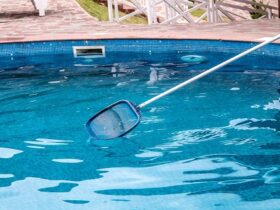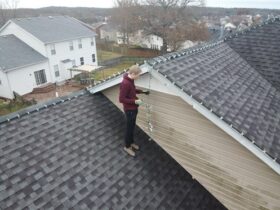Proper pest control around outdoor dumpsters is crucial for maintaining hygiene and preventing infestations. Food workers play a vital role in ensuring that pests do not become a problem in and around these waste areas. Effective pest deterrence strategies can significantly reduce the risk of contamination and the spread of diseases. This comprehensive guide details the best practices food workers should follow to keep pests at bay.
Understanding the Importance of Pest Control
Pests such as rodents, flies, and insects are attracted to food waste found in outdoor dumpsters. These pests can carry harmful pathogens that pose significant health risks to both workers and customers. Maintaining a pest-free environment is not only a regulatory requirement but also a crucial aspect of food safety management.
Choosing the Right Dumpster Location
Selecting an appropriate location for outdoor dumpsters is the first step in pest control. The dumpster should be placed away from the main building and food preparation areas to minimize the risk of pests entering the premises. Additionally, it should be located on a level, paved surface to prevent standing water, which can attract pests.
Optimal Distance and Placement
- Away from Entry Points: Ensure dumpsters are positioned far from doors, windows, and ventilation systems.
- Sunlit Areas: Place dumpsters in well-lit areas to deter nocturnal pests like rodents.
- Proper Drainage: Ensure the location has adequate drainage to avoid water accumulation.
Maintaining Dumpster Cleanliness

Keeping the dumpster and surrounding area clean is essential for pest control. Regular cleaning schedules should be established and strictly followed.
Routine Cleaning Practices
- Daily Inspections: Conduct daily inspections to ensure the area is free from spills and debris.
- Weekly Deep Cleaning: Clean the inside of the dumpster weekly with a high-pressure hose and disinfectant.
- Prompt Waste Removal: Ensure waste is removed regularly to prevent overflow and the buildup of organic material.
Proper Waste Management
Proper waste management practices are critical in deterring pests. This includes how waste is stored, handled, and disposed of.
Effective Waste Handling
- Use Sealed Bags: Always use sealed, heavy-duty trash bags to prevent leaks and odors.
- Timely Disposal: Dispose of waste promptly and do not allow bags to sit outside the dumpster.
- Avoid Overfilling: Do not overfill dumpsters as this provides easy access for pests.
Securing Dumpsters
Securing dumpsters properly is another key aspect of pest control. This prevents pests from gaining access to the waste inside.
Securing Techniques
- Tight-fitting Lids: Ensure all dumpsters have tight-fitting lids that are kept closed at all times.
- Locking Mechanisms: Use locking mechanisms to secure lids and prevent tampering by larger animals like raccoons.
- Regular Lid Checks: Inspect lids regularly to ensure they are functioning correctly and are not damaged.
Pest Deterrent Methods

In addition to maintaining cleanliness and proper waste management, additional pest deterrent methods can be employed to further reduce the risk of infestation.
Physical Barriers
- Install Fencing: Surround dumpsters with a fence or enclosure to deter larger pests.
- Mesh Screens: Use mesh screens to cover vents and openings in the dumpster.
Chemical Deterrents
- Use Pesticides: Apply approved pesticides around the perimeter of the dumpster area.
- Rodent Bait Stations: Place rodent bait stations strategically around the dumpster to control rodent populations.
Natural Deterrents
- Essential Oils: Use natural repellents like peppermint or eucalyptus oil around the dumpster area.
- Predator Decoys: Install decoys of predator birds to scare away smaller pests.
Training and Awareness
Educating food workers about pest prevention and control is vital. Regular training ensures that everyone understands their role in maintaining a pest-free environment.
Training Programs
- Regular Workshops: Conduct regular workshops on pest control best practices.
- Awareness Campaigns: Implement awareness campaigns to highlight the importance of pest control.
- Detailed Manuals: Provide detailed manuals and guidelines on proper waste handling and dumpster maintenance.
Monitoring and Record-Keeping
Continuous monitoring and record-keeping are essential for effective pest control. Keeping detailed records helps in identifying patterns and areas that need improvement.
Effective Monitoring Techniques
- Pest Activity Logs: Maintain logs of any pest sightings and activity around the dumpster.
- Inspection Checklists: Use inspection checklists to ensure all aspects of pest control are being adhered to.
- Regular Audits: Conduct regular audits to assess the effectiveness of pest control measures and make necessary adjustments.
FAQs about How Should Food Workers Deter Pests from Outdoor Dumpsters
The most common pests include rodents (rats and mice), insects (flies and cockroaches), and birds (pigeons and seagulls).
Dumpsters should be cleaned at least once a week to prevent the buildup of organic matter that attracts pests.
Yes, natural deterrents like peppermint oil and diatomaceous earth can be effective and environmentally friendly options.
Employee training should cover best practices for waste management, identifying signs of pest activity, and proper sanitation protocols.
Technology such as ultrasonic repellents, smart traps, and automated monitoring systems can provide real-time data and enhance the effectiveness of pest control measures.
Conclusion
Food workers play a crucial role in deterring pests from outdoor dumpsters. By following best practices in dumpster placement, cleanliness, waste management, securing methods, and additional deterrent techniques, they can significantly reduce the risk of pest infestations. Ongoing training and monitoring further ensure a safe and hygienic environment. Implementing these comprehensive strategies will not only meet regulatory standards but also protect the health and safety of everyone involved.












Find Us on Socials